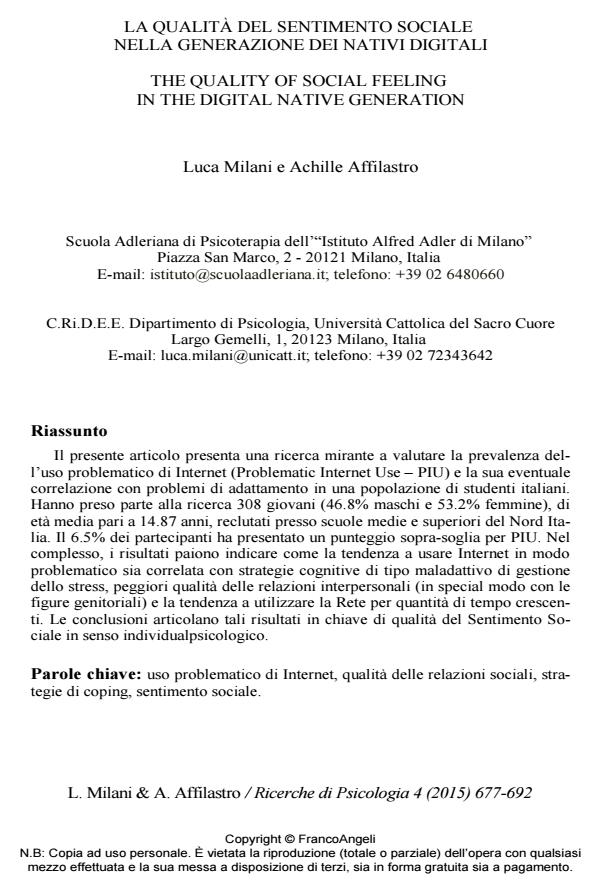The quality of social feeling in the digital native generation
Journal title RICERCHE DI PSICOLOGIA
Author/s Luca Milani, Affilastro Achille
Publishing Year 2016 Issue 2015/4
Language Italian Pages 16 P. 677-692 File size 83 KB
DOI 10.3280/RIP2015-004006
DOI is like a bar code for intellectual property: to have more infomation
click here
Below, you can see the article first page
If you want to buy this article in PDF format, you can do it, following the instructions to buy download credits

FrancoAngeli is member of Publishers International Linking Association, Inc (PILA), a not-for-profit association which run the CrossRef service enabling links to and from online scholarly content.
The research here presented has the objective of evaluating the prevalence of problematic Internet use (PIU) and its correlation with maladaptive outcomes in a sample of Italian students. 308 participants (46.8% males and 53.2% females, mean age of 14.87 years) were recruited in North Italy schools. 6.5% of participants met scores compatible with PIU in the screening questionnaire. Results seem to indicate that youth with PIU show worse coping strategies, worse interpersonal relations (especially with parents) and tend to use Internet for more hours. Results are read in the light of Adler concept of Social Feeling.
Keywords: Problematic Internet use, quality of interpersonal relations, coping strategies, social feeling
Luca Milani, Affilastro Achille, La qualità del sentimento sociale nella generazione dei nativi digitali in "RICERCHE DI PSICOLOGIA " 4/2015, pp 677-692, DOI: 10.3280/RIP2015-004006